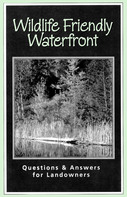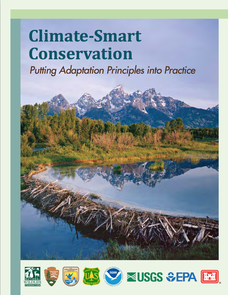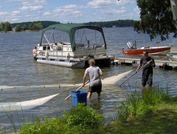Protect Your Land From Invasive Species
The Ontario Invasive Plant Council has a wealth of resources to help protect conservation properties from Invasive Plants - a growing concern as we feel the effects of climate change in the A2A.
Link to the Council here.
Link to the Council here.
Reforesting Your Land
Forests Ontario's 50 Million Tree program is designed to significantly reduce landowner's costs of large-scale tree planting. We work alongside local tree planting agencies in Ontario, including regional Conservation Authorities and local stewardship councils to implement this program. Planting agencies work directly with landowners to determine site eligibility, allocate funding and coordinate planting. The landowner and site requirements are:
- Have a productive area at least one hectare in size; smaller areas may be considered depending on the landscape context
- Ensure land is open or mostly open and has not been a woodland as defined by the Forestry Act since December 31, 1989.
- Sign a 15-year management agreement to maintain the trees
- Employ good forestry practices
- May have to assume some of the additional costs for trees, to implement the plan and to maintain the trees
Wildflower seed grants
Every year this organization provides wildflower seed grants to landowners and organizations.
Wildlife Friendly Waterfront

How wildlife-friendly is your waterfront? Test your knowledge of waterfront conservation and learn about improvements you can make to protect wildlife on our shared landscape. This brochure contains stories from local landowners and practical information about natural debris, pesticides and insecticides, septic tanks, and more. Download the brochure here.
Shoreline Stewardship Info Booklet
|
Everything you need to know about buffers, mulching, erosion, wells, septic tanks, permitting, invasive species, Lyme Disease, and more can be found in our Shoreline Stewardship info booklet (2012). Download info booklet here. |
Fire in Oak Systems
|
Abstract: Guidelines for using prescribed fire to regenerate and restore upland oak forests, woodlands, and savannas in eastern North America were developed by synthesizing the results of more than 100 scientific publications. Download the report here. |
Climate-Smart Conservation

Climate change already is having significant impacts on the nation’s species and ecosystems, and these effects are projected to increase considerably over time. How should we prepare for and respond to the impacts of climate change on wildlife and their habitats?
Download the National Wildlife Federation report here.
More Landowner Resources
Get in touch if you're a landowner looking for more resources, such as:
- Stewardship Agreements & Plans
- Managed Forest Tax Incentive Program
- Forest Certification
- Environmental Farm Plan
- Property Donations




